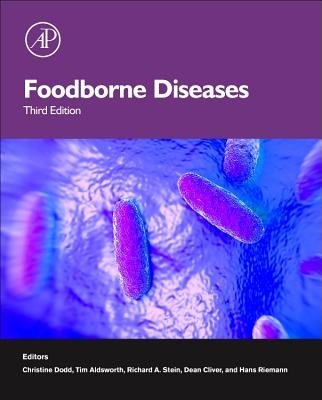
- We will send in 10–14 business days.
- Publisher: Academic Press
- ISBN-10: 012385007X
- ISBN-13: 9780123850072
- Format: 19.1 x 23.5 x 3.2 cm, hardcover
- Language: English
- SAVE -10% with code: EXTRA
Foodborne Diseases (e-book) (used book) | bookbook.eu
Reviews
Description
Foodborne Diseases, Third Edition, covers the ever-changing complex issues that have emerged in the food industry over the past decade. This exceptional volume continues to offer broad coverage that provides a foundation for a practical understanding of diseases and to help researchers and scientists manage foodborne illnesses and prevent and control outbreaks. It explains recent scientific and industry developments to improve awareness, education, and communication surrounding foodborne disease and food safety.
Foodborne Diseases, Third Edition, is a comprehensive update with strong new topics of concern from the past decade. Topics include bacterial, fungal, parasitic, and viral foodborne diseases (including disease mechanism and genetics where appropriate), chemical toxicants (including natural intoxicants and bio-toxins), risk-based control measures, and virulence factors of microbial pathogens that cause disease, as well as epigenetics and foodborne pathogens. Other new topics include nanotechnology, bioterrorism and the use of foodborne pathogens, antimicrobial resistance, antibiotic resistance, and more.
EXTRA 10 % discount with code: EXTRA
The promotion ends in 20d.13:16:33
The discount code is valid when purchasing from 10 €. Discounts do not stack.
- Publisher: Academic Press
- ISBN-10: 012385007X
- ISBN-13: 9780123850072
- Format: 19.1 x 23.5 x 3.2 cm, hardcover
- Language: English English
Foodborne Diseases, Third Edition, covers the ever-changing complex issues that have emerged in the food industry over the past decade. This exceptional volume continues to offer broad coverage that provides a foundation for a practical understanding of diseases and to help researchers and scientists manage foodborne illnesses and prevent and control outbreaks. It explains recent scientific and industry developments to improve awareness, education, and communication surrounding foodborne disease and food safety.
Foodborne Diseases, Third Edition, is a comprehensive update with strong new topics of concern from the past decade. Topics include bacterial, fungal, parasitic, and viral foodborne diseases (including disease mechanism and genetics where appropriate), chemical toxicants (including natural intoxicants and bio-toxins), risk-based control measures, and virulence factors of microbial pathogens that cause disease, as well as epigenetics and foodborne pathogens. Other new topics include nanotechnology, bioterrorism and the use of foodborne pathogens, antimicrobial resistance, antibiotic resistance, and more.


Reviews